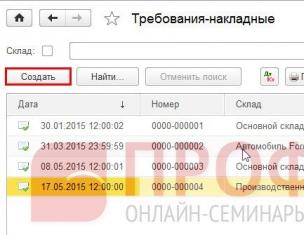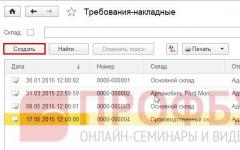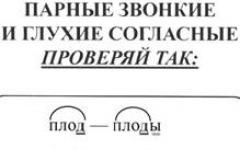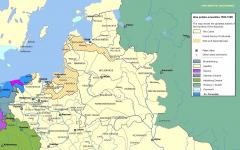How was childbirth a few decades ago? From the stories of our mothers and grandmothers, we know that from the beginning of labor and throughout the entire birth, the woman lay in bed. But giving birth only lying down is not always convenient and effective; there are other ways to experience contractions, and they very often help to significantly reduce labor pain.
In the old days, during labor, a woman had to go around the entire house, open all the locks, drawers, doors and untie all the knots. This meant the symbolic opening of the birth canal and the woman’s readiness for childbirth. It turns out that before the woman moved during contractions, because by the time you open everything and untie it, enough time will pass.
Active movement
During contractions, especially in the active phase of the first stage of labor, when the contractions are strong, you need to take a comfortable position. A regular one is perfect for this. walking. You need to move at your own pace, calmly, without sprinting. You can walk from the first contractions until you have the strength, periodically you can rest, and then resume movement again. The gait can be anything - you can waddle like a duck, rotate your hips, walk with your legs wide apart. Any option will do - the main thing is that it should be comfortable. Many women in labor are helped to reduce labor pain. dance movements.
Important: Don't move suddenly, move smoothly and slowly. To relax while dancing or walking, you can turn on your favorite music (for example, listen to it from your phone or tablet).
Water
Staying in water is a great way to relieve pain during contractions. In water, Archimedes' law acts on our body - the liquid simply pushes the woman out, she does not feel the weight of the body and perceives the water as a massage. Warm water warms up the muscles of the back and abdomen, they relax, and the birth canal relaxes - as a result, pain decreases. A bath is taken in the first stage of labor (contraction), this can be done both at home and in the maternity hospital - today many birth boxes are equipped bathroom or at least shower cabin. In any case, water will have a relaxing effect on the woman in labor.
Important: There is no need to take a very hot bath, even if it seems that the heat helps to better endure contractions, the water temperature should be comfortable.
Ball
In many maternity hospitals today they use fitball- a rubber inflatable ball commonly used for aerobics. With the help of a fitball, you can take a variety of poses: swing, rotate your pelvis, spring, roll from side to side, sitting on the ball. You can also kneel down and lean your arms and chest on the ball, rocking back and forth. Sitting on the ball, the woman in labor takes a vertical position, and this contributes to better dilatation of the cervix. In addition, riding while sitting on a ball affects reflexogenic zones and reduces the pain of contractions.
Important: the ball should not be fully inflated - it is comfortable to sit on such a ball, you cannot roll off it, like with a maximally inflated ball, the position on such a not fully inflated ball does not interfere with the advancement of the child’s head.

Don't be embarrassed to look stupid during childbirth. No one in the delivery room cares how you move if it helps you get through contractions. There is nothing funny, ridiculous, and even more so stupid in any type of movement during childbirth. In the birth block you won’t surprise anyone with anything.
“Hanging” the belly
As the contractions intensify, you can take positions in which the stomach is as if in a “suspended” state. This way, the weight of the uterus will put less pressure on large blood vessels, and consequently, uteroplacental blood flow will improve. In addition, the load on the spine is removed, which will reduce pain.
You can simply lean forward and lean against a support that comes to hand - a table, chair, headboard, window sill. Some maternity hospitals have Swedish walls And ropes attached to the ceiling. During a fight, you can hang on them, leaning on a wall or rope. Previously, special tension ropes were used almost everywhere, although they were secured not to the ceiling, but to the foot of the bed. During contractions, the woman in labor pulls the rope with all her might while kneeling. In partner childbirth, you can use positions that allow you to transfer your body weight to your partner. You can hang on your husband’s neck or lean on him.
And if you still lie down?
Sometimes, for medical reasons, a woman needs to give birth in a horizontal position. In this case, you do not need to lie on your back, since in this position the large uterus compresses large blood vessels - as a result, the blood supply to the child worsens. It is better to lie on your side with something under your chest and between your legs, such as a pillow or blanket. In modern maternity hospitals, instead of traditional beds there are transformable beds. On such a bed, a woman in labor can take a position that is comfortable for herself, choose its height, lower or raise one of its ends - and therefore make it easier to experience contractions.
You can show your imagination and come up with your own poses that are convenient for you. It is only important that they help you relax, are stable and safe.
Reasons for more
It is worth recognizing the fact that almost all women giving birth, to one degree or another, experience pain that has objective causes.
In our body, all changes that occur, as well as all external and internal influences, are captured by receptors - special cellular structures. Any type of irritant familiar to the body can be painful. Its main feature is the high intensity of exposure, which causes tissue damage and entails changes in all body systems.
The longest and most painful period of labor is the first, during which regular, gradually more frequent and intensifying contractions lead to dilatation of the cervix. During contractions, the muscles of the uterus contract - it is due to this that it opens, allowing passage for the baby. The baby's head puts pressure on the tissues of the uterus, irritating the nerve endings in them; The uterine ligaments are stretched, from the receptors of which pain impulses also come. At the very beginning, contractions may resemble dragging painful sensations During menstruation, as the intensity and duration of contractions increase, the pain also intensifies. However, normally natural processes should not cause pain overload in the mother’s body. In the second stage of labor, when the cervix is fully dilated, pushing begins and the fetus is expelled. This pain is more clearly defined and is felt at the site of fetal pressure on the nerve endings in the area of the coccyx, vagina, perineum, and external genitalia.
However, the pain that a woman experiences during childbirth is only 30% caused by irritation of nerve endings, fibers, plexuses as a result of contractions of the uterus and compression of soft tissue by the presenting part of the fetus (usually the head), stretching of the ligamentous apparatus of the uterus and perineum. After all, in the body of a woman in labor, during a natural process, such as normal childbirth, the anti-pain system is turned on. The role of the anti-pain system in the human body is to inhibit the excessive flow of pain impulses entering the spinal cord and brain, and thereby protect the central nervous system from overexcitation, development of shock conditions, chronic pain.
In addition, the anti-pain system plays the role of a kind of filter: it includes structures of the nervous system, in particular the brain, responsible for emotional reactions, in which all incoming stimuli are regarded as dangerous or harmless, not requiring an immediate response. The latter are filtered out by the anti-pain system, and the remaining impulses are admitted to the response centers of the nervous system. During childbirth, the anti-pain system blocks excessive pain impulses and promotes the release of natural painkillers into the blood.
Nature took care of women and preparing the female body for childbirth, setting the pain threshold at female body much higher than in men - only fairly strong irritants can reach this level and cause a pain reaction. In addition, before childbirth, the sensitivity of the uterus decreases, and the pain threshold further increases. This is why painless or low-pain childbirth is not so rare.
What is the cause of up to 70% of pain during childbirth? What wise nature is powerless against, and only can help medicines and medical intervention? If we do not take cases of severe obstetric pathology, where pain is caused by a serious disruption of the natural process of childbirth and where a real threat is created to the health and life of the mother and baby, then these 70% are due to banal fear. Fear of the birth itself, of the unknown, fear for oneself, anxiety for one’s health, fear and anticipation of those very “mortal pangs” that the process of giving birth to a child brings with it. The culmination of fear during childbirth leads to the release of the stress hormone - adrenaline, muscle tension, compression of the vessels and nerves of the uterus, and ischemia of the uterine tissue (the so-called deterioration of blood supply and the resulting deficiency of nutrients and oxygen delivered by the blood). In addition, fear causes a decrease in the pain threshold: now even a minor irritant can cause painful sensations, and the expectation of pain will lead to the fact that these sensations will definitely appear and will be several times stronger.
Pain relief or patience?
What to do, or perhaps not to do? Of course, in some situations the doctor will solve this problem by using one or another method of pain relief. But is normal childbirth worth pain relief?
Modern medicine, and in particular anesthesiology, for last years stepped far forward. The technique of pain relief has been improved, new methods and drugs for anesthesia have been invented, and sophisticated equipment helps monitor the patient’s condition. However, the organisms of a pregnant woman and her child are so closely interconnected that any medicine administered to the expectant mother, even in a small dose, will still enter the baby’s blood. Pain medications can cause drowsiness and depress the baby's breathing, and local anesthetics can have adverse effects on the baby's cardiovascular system.
During childbirth, not only the expectant mother experiences fear and pain, but also the newborn baby. Therefore, mother’s calm, confident voice, her help, the fact that during childbirth she thinks not about her pain, but about him, about the child, calms him down, feels sorry for him and rejoices at his birth - all this has an invaluable effect on the baby, and It helps a woman to easily endure all unpleasant sensations.
Psychoprophylactic preparation for childbirth is the key to success
Since one of the main causes of pain is fear, you need to try to eliminate it. Firstly, a woman must know what will happen to her and her child during childbirth, since the unknown only aggravates stress, tension, and, consequently, pain. However, even with full awareness (and this is not difficult now, since there is a lot of information on childbirth and the main thing is the desire to study it), the subconscious animal fear of pain can remain and aggravate the entire natural process of childbirth.
The method of psychoprophylactic preparation of pregnant women for childbirth in our country began to be developed in the 50s of the 20th century, but at that time it was not widely used, since it required an individual approach to each pregnant woman. Currently, expectant parents have access to childbirth preparation courses. During the classes, future mothers and fathers will consistently learn the features of all three periods of labor: contractions (dilation of the cervix), expulsion of the fetus (pushing), discharge of the placenta; they learn correct behavior in each period, breathing, position, methods of controlling their condition, methods of self-anesthesia. At the same time, the future parents choose a maternity hospital, decide on the presence of the father or one of their relatives at the birth, etc.
To achieve maximum emotional comfort, modern maternity hospitals are equipped with wards that, with excellent technical equipment, provide the necessary medical equipment maintain comfort, bringing the atmosphere closer to home. For psychological support of the woman in labor, the presence of her husband, other relatives, and personal assistants is allowed. After training at a childbirth preparation school, they will provide an invaluable service, calming and encouraging the woman, helping her breathe correctly, and giving a pain-relieving massage.
Other methods of self-anesthesia during labor
Having analyzed the causes and mechanisms of labor pain, one can understand that a lot in reducing pain during childbirth depends on the woman herself.
Usually the most painful stage of labor is the period of cervical dilatation. The first contractions may resemble menstrual pain. Gradually, contractions will become more frequent, longer, and stronger. During contractions, the uterus becomes hard due to muscle contraction and then relaxes. Contractions occur against the will of the woman, regardless of her desire, and the woman in labor cannot control them.
To relieve pain during contractions, in the absence of contraindications and with the permission of the doctor, a woman in labor can choose a position (sitting, lying, standing, leaning on her hands) and a type of behavior (active or passive) that is most comfortable for her. For most women in the first stage of labor, it is most comfortable to be in an upright position: walking (walking with high legs raised is especially effective) or standing with your hands resting on the wall or headboard. You can use the support of a partner. If you still prefer to lie down, it is better to turn on your side rather than on your back. In the supine position, the uterus compresses the inferior vena cava, preventing normal blood flow to the heart. As a result, the blood supply to many organs deteriorates, blood pressure may decrease, dizziness and loss of consciousness may occur. In addition, the supine position reduces intense uterine contractions, thereby lengthening the period of contractions and dilatation of the cervix.
Proper breathing has a good pain-relieving and distracting effect. To ease contractions, so-called “slow” or economical breathing is used, characterized by slow, deep breaths and even longer exhalations.
During prolonged and frequent contractions, one uses “dog-like” breathing, in which a quiet, quick breath and a noisy, short breath are approximately equal in duration; this breathing is shallow. Proper breathing helps reduce pain and save energy.
Massage (performed by yourself or someone else) can significantly ease the pain of childbirth. The main techniques of this massage include stroking, rubbing, kneading or pressing. The effectiveness of each technique is quite individual, so the woman herself must choose the most suitable massage method for her. The most commonly used are stroking the lower half of the abdomen, pressing and rubbing the lower back. Kneading and pressing in the lateral corners of the lumbar rhombus (the dimples above the buttocks) also have a good analgesic effect.
During normal labor, you can take advantage of the unique pain-relieving properties of warm water. Water has a relaxing, soothing, massaging effect, increases the elasticity, pliability and extensibility of tissues. The woman in labor can take a shower or bath (some maternity hospitals have special pools in the delivery rooms). After the rupture of amniotic fluid, it is better to refrain from taking a bath, as the risk of infection during childbirth increases.
Childbirth, especially the first one, is a rather lengthy process. The expectant mother will need her main strength at the end - during pushing and expulsion of the fetus. Therefore, in the first period you need to use every opportunity to rest yourself and give your baby a rest. Between contractions you should relax (using any relaxation methods: massage, self-hypnosis), and if possible, take a nap.
Calm, relaxing music can have a good effect.
Optimal behavior during pushing
In the second stage of labor, when the cervix is fully dilated, the fetus is expelled with the help of pushing - voluntary contractions of the muscles of the anterior abdominal wall. Attempts, unlike contractions, a woman can control, for example, delay them or intensify them. During this period of labor, to relieve pain, you should synchronize pushing, breathing and follow the midwife’s commands, which protect the perineum from ruptures, and the baby from damage and trauma during childbirth. You need to push after taking a deep breath, as if pushing the baby out with the help of the diaphragm pressing on the uterus. To do this, you need to direct your efforts downwards, towards the perineum, and not towards the head. There is no need to strain your facial muscles or scream: you will waste a lot of energy without helping the child and the birth process. After pushing, you should exhale smoothly, not sharply: this helps to consolidate the result of the pushing; with a sharp exhalation, the fetus may retreat to its previous positions. After the effort, breathing is calm, even: take a deep breath and exhale completely. You should try to relax and rest before the next push.
The third stage of labor - the birth of the placenta - usually does not cause acute painful sensations and does not require pain relief.
Each woman and each birth is individual: it is difficult to choose a method of non-drug pain relief that is equally effective for everyone. The main thing is don’t be afraid, listen to your body, think about the baby - and then everything will go well!
Unconventional methods of pain relief
Due to the widespread use of non-traditional methods of treatment, methods of aromatherapy, music therapy, and reflexology - influencing biologically active points on the surface of the human body - are becoming increasingly popular. However, there are still few specialists who know these techniques, in particular for pain relief during childbirth. In addition, sensitivity to the effects of these methods is highly individual.
Greetings to all readers and guests of my blog. Today we will talk about how to make childbirth easier?
First, you need to reduce the fear of childbirth, learn to react correctly to contractions, using massage and breathing during contractions and pushing.

During contractions, contractions appear (the uterus contracts), the cervix opens and the baby moves along the birth canal. And pain occurs due to:
- Ligament and muscle strains
- Cervical dilatation
- Pressure on the cervix and vagina
In order for the baby to progress easily, the mother needs to learn to relax and behave calmly. If the mother is calm, her body produces a sufficient amount of oxytocin (a hormone that stimulates labor). If the mother panics and is afraid, her body produces adrenaline (a hormone due to which the muscles tense and the cervix stops contracting, thereby slowing down labor, provoking the production of an even larger portion of adrenaline).
And a vicious circle appears:
fear - muscle tension - pain - fear
You cannot control the contractions of the uterus, but you can consciously relax the muscles surrounding the uterus, thereby reducing pain.
You need to learn to overcome your fears, anxieties and worries and help your baby be born as calmly as possible.
How to reduce fear of childbirth?
1. The unknown is known.
Everyone is afraid of the unknown and uncertainty. If you know the main stages of childbirth, have an idea of what awaits you in the prenatal period, what contractions and pushing are, how to breathe correctly, you will be much easier and calmer.
It is best to take a course on preparing for childbirth, but you can also talk with friends who have given birth, read information on the Internet, and read special literature on this topic.
Choose in advance the maternity hospital where you are going to give birth. Find out about the features of this establishment. Find out what the conditions are there. If you are very worried, choose the doctor with whom you want to give birth and discuss all the nuances with him, ask questions.

2. Pain is an ally, not an enemy.
Many people fear pain during childbirth, but pain is a part of childbirth. By following special breathing techniques during childbirth and relaxation methods, you can endure the pain, reduce it and still have the strength to push.
But you shouldn’t scream or silently endure the pain with clenched teeth, as you will only prevent the cervix from opening and lose a lot of strength.
Pain is an advisor who will tell you when you need to relax, change position or take a certain position for the most comfortable passage of the baby through the birth canal.
3. The alarm case is ready!
It is much easier to prepare for the start of labor when you know that you have everything ready. Pack your things for the maternity hospital in advance according to the list (lists are available in the maternity hospital, antenatal clinics, from friends who gave birth, or on the Internet).
Decide how you are going to go to the maternity hospital (call an ambulance or your spouse can take you), which route (so as not to get stuck in traffic).
Prepare yourself mentally for any situation, for example, your water breaks in the store or contractions start while walking. Don't worry, you will manage everything, you have time. You will be able to go home or ask to be picked up. The main thing is don't panic.
4. A positive attitude is the key to success!
Pray, meditate, sing. Imagine your baby as you press him to your chest, kiss him and hug him. Think positively, do not use the word “not”.
5. Husband’s support – in what way?
Think in advance whether you want to see someone close to you (husband, mother) during childbirth. What kind of help do you expect from them? Are you going to have a partner birth or not? Just remember that your loved ones will not read your thoughts. You need to explain what and when you want them to do.
6. Oh this head!
During childbirth, you don’t need to think about how the birth will end quickly, don’t rush things. Your body knows what, how and when it needs. Let him act.
How to postpone contractions?
- If you are at home, then water is your faithful assistant. If contractions are strong, try immersing yourself in warm water or taking a warm shower to relieve tension.
- Heat helps relieve pain. For example, it could be a bag filled with wheat (flax) grains. This pouch can be heated in the microwave for a few minutes and can remain warm for about an hour. This is an excellent way to warm your back or stomach. Or you can use a warm water bottle wrapped in a towel.
- Go to the toilet as often as possible to empty your bladder.
- Use proper breathing during childbirth (more on this below).
- Massage is another great option.
- Good position (choose your position in which you are most comfortable to endure contractions), change position as often as possible.
During contractions you can:
- walk, stand with your hands on the table or squat.
- get on all fours or sit on a chair with your legs spread apart
- lie on your side with pillows between your legs and under your breasts (if you decide to lie down)
Stages of breathing
There are 3 stages of breathing + breathing during pushing, depending on what stage of labor you are at. These breathing techniques will help you relax and rest between contractions.

Stage 1 of breathing – deep breathing
This breathing should be deep. You need to inhale through your nose, exhale through your mouth. When the contraction begins, start breathing like this, and when the contraction ends, stop. It turns out about 6-9 such inhalations and exhalations per minute. If the contraction lasts 30 seconds, it will take about 3-6 breaths.
Breathing stage 2 – controlled breathing
Used when contractions last more than 1 minute (1-3 minutes). In this case, you need to breathe shallowly and as if with acceleration. The contraction begins slowly (at this time you need to take several chest breaths and exhalations), then the contraction increases (we begin to breathe more shallowly) and reaches its peak (we breathe frequently and shallowly), then the contraction gradually subsides (breathing becomes less frequent, ending with deep inhalation and exhalation ).
Stage 3 – cleansing breath
It is used at the last stage of cervical dilatation. Now the contractions are most sensitive, the distance between them is reduced.
So let's do it
1 deep breath
4 frequent shallow inhalations and exhalations
1 deep, intense breath in through your nose and exhale slowly through your mouth (as if you were chilling soup)
Stage 4 – breathing during pushing
While pushing, you need to push (as if you really want to go to the toilet in a big way, but you are constipated).
So let's do it
- Chest deep breath
- Deep chest exhalation
- Full chest inhalation (you need to draw more air into the chest and into the “stomach”)
- Hold your breath for 30-50 seconds, and then slowly exhale the air as if blowing out a candle.
- Press your chin toward your sternum (looking at your belly button) and push down your belly.
During one contraction you can push like this 2-3 times.
It is important to remember that deep breathing is the main breathing during labor. Always return to deep breathing whenever possible. Stay at each stage of the breath for as long as possible. Only if necessary, include the next stage of breathing.
And yet, you may completely forget about all the techniques you read. The most important thing is to listen to your body.
Types of breathing during childbirth:
Massage
- Massage from the tailbone up to the lower back. Pressing forcefully, slowly move your fists (fingers) from the tailbone to the lower back. 10-20 times per minute.
- Move your fist from the sacrum to the lower back and back with circular pressing movements.
While pushing, listen carefully to your obstetrician. The doctor will tell you when to push.
With the birth of the baby, all pains are quickly forgotten. And remember the newborn to the breast in the maternity hospital.
How to relieve pain during childbirth? During childbirth, try to learn to relax, not be afraid, listen to your body, help yourself with breathing and massage. Then the birth will take place calmly, without unnecessary pain and stress.
The expectant mother looks forward to her child's birthday (birth) not only because she wants to see her baby, but also because she is tired of pregnancy. At the same time, a pregnant woman, especially a first-time mother, is concerned about how long labor will take and how easier it is to endure labor pains during childbirth.
A little about contractions
Labor contractions are periodic contractions of the muscles of the uterus, accompanied by pain. The average duration of contractions varies from 9-13 hours, while the pushing period ranges from 15-20 minutes.
If at the beginning of the onset of contractions the frequency between them is about half an hour, then by the time of birth the time between contractions is reduced to 2-3 minutes.
The pain of contractions also increases. At first, a pregnant woman can still endure the pain, but as the contractions become more frequent, they seem to her more and more painful each time. This is due to the fact that as it moves along the birth canal, the fetus puts more and more pressure on the woman’s pelvis.
Labor pains are quite painful, but it will be much easier to endure them if you follow a few rules. Let's look at the main phases of contractions, as well as recommendations on how to reduce pain during them.
Preparatory
 This phase is considered latent, its duration is from 5 to 9 hours. In this phase, the birth canal opens. All this time the woman can stay at home. The main task during this period is to relax and save energy. During the latent phase, the cervix can dilate up to 5 cm. The duration between contractions is initially 30 minutes, and by the end of the phase it reaches 10 minutes.
This phase is considered latent, its duration is from 5 to 9 hours. In this phase, the birth canal opens. All this time the woman can stay at home. The main task during this period is to relax and save energy. During the latent phase, the cervix can dilate up to 5 cm. The duration between contractions is initially 30 minutes, and by the end of the phase it reaches 10 minutes.
What should mom do:
- Keep a contraction diary
- During contractions, breathe deeply into the stomach (inhale through the nose, exhale through the mouth). The ratio of inhalation and exhalation is 1 to 2 (inhale for 3 seconds, exhale for 6 seconds)
- Lie down, relax, spend time with your husband
- Listen to music
- Carry out hygiene procedures, put yourself in order. You can take a shower, the water temperature should be no more than 38-39 degrees.
- Have a snack. A small amount of fruits, vegetables, and dairy products is acceptable.
- Pack your bag for the maternity hospital
What not to do in the preparatory phase:
- Panic and randomly rush around the apartment
- Eat heavily before the maternity hospital
- Forget about Required documents to the maternity hospital
Active
 During this phase, contraction intervals decrease from 10 minutes at the beginning to 3 minutes at the end. The cervix dilates by 7-8 cm and the waters drain due to the natural rupture of the bladder. Here it is important not to miss the moment and come to the maternity hospital when the intensity of contractions is at least 5 minutes.
During this phase, contraction intervals decrease from 10 minutes at the beginning to 3 minutes at the end. The cervix dilates by 7-8 cm and the waters drain due to the natural rupture of the bladder. Here it is important not to miss the moment and come to the maternity hospital when the intensity of contractions is at least 5 minutes.
What should mom do:
- Talk and communicate with your child
- Focus on the result, not the process
- Stroke your stomach in the direction from the waist to the navel. You can also clench your hand into a fist and, at the moment when the next contraction hits, rub it on your lower back in the area along the spine. This will help you bear the pain
- Breathe slowly and deeply, trying to inhale through your nose and exhale through your mouth.
- Look for a comfortable position that would make it easier to endure contractions.
- Stimulate the approach of labor by walking more.
Yes, yes, do not lie in bed, but move along the corridor or the birth room. When labor pains overtake a pregnant woman standing on her feet, it is easier to endure, since the woman’s body is not relaxed, but is in some tone.
In addition, periodic movement of a woman on her feet will allow the fetus to quickly descend to the cervix, which will speed up its dilation. And, therefore, it will bring the moment of birth closer.
A pregnant woman should not be afraid that as a result of constantly being on her feet, she will become weak and will not have the strength to give birth. There will be enough strength, as Nature intended.
What not to do during the active phase:
- Sit upright on a hard surface with your entire pelvis
- Drink and eat
- Retain urination
- Self-administer painkillers
- Refuse doctors' recommendations
- Clenching and straining muscles
- Go to the maternity hospital on your own
- Screaming, being afraid, panicking
The last point can lead to the cessation of labor due to a stressful situation. In addition, during screaming, air is inhaled superficially and mother and child may experience oxygen starvation.
Transitional phase (lowering)
 The phase period is from 1 hour to 2 hours. In this phase, contractions last up to 2 minutes. There is pain in the sacrum, it can cause nausea, vomiting, freezing, and fever.
The phase period is from 1 hour to 2 hours. In this phase, contractions last up to 2 minutes. There is pain in the sacrum, it can cause nausea, vomiting, freezing, and fever.
What should mom do:
- If you want to push, you should first call a doctor.
- If the doctor says that dilation has occurred, but it is too early to give birth, this means that the baby’s head is still high. In this case, the mother needs to push vertically during contractions.
- If the opposite situation occurs, when there is no full dilation, but you want to push, you need to stand in a knee-elbow position, thus rolling the child away in order to reduce the pressure on the perineum.
What not to do:
- Start pushing without your doctor's permission
- Squeeze your hips, stand up sharply, jump
- Push on your face and puff out your cheeks
- Holding back bowel movements due to inconvenience and shame
Positive attitude during childbirth
By talking to your child and reassuring him that everything will be fine, you put yourself in a positive mood. Follow these tips to help you ease your labor pains.










